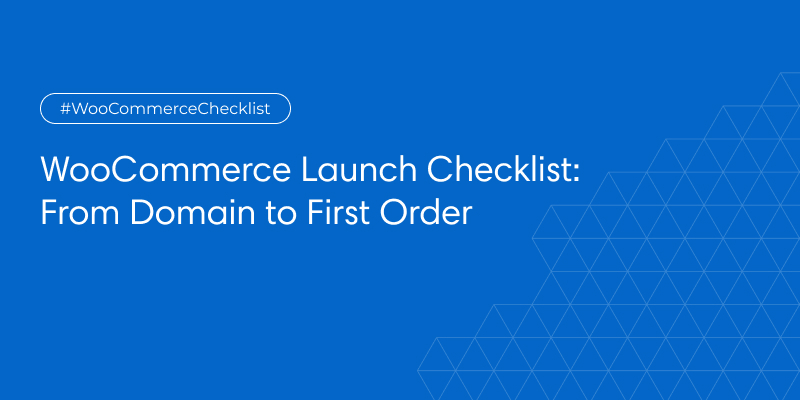Table of Contents
- Pick the Right Hosting & Domain for Your WooCommerce Store
- Install and Configure WooCommerce the Right Way
- Choose a Fast, Mobile Optimized WooCommerce Theme
- Add Essential WooCommerce Plugins for SEO, Security & Speed
- Configure Shipping, Tax, and Payment Gateways Properly
- Launch with a Pre Built Marketing Funnel
- Final QA, Test on Desktop & Mobile Before Going Live
- Final Thoughts
- FAQs
Launching a WooCommerce store can be thrilling, and overwhelming. But with a proper WooCommerce launch checklist, you’ll go live seamlessly, avoid common pitfalls, and convert your first customer with confidence.
This guide covers everything what to do before launching WooCommerce, from domain and hosting to plugins, funnels, and final QA. You’ll also learn WooCommerce first order tips and ensure compliance with a GDPR checklist for WooCommerce launch.
Want help managing orders after launch? Here’s a helpful resource:
Fix Local Order Issues with the Right WooCommerce Tools
1. Pick the Right Hosting & Domain for Your WooCommerce Store
Choosing a reliable domain and hosting provider is your foundation.
- Domain: Select a memorable, brandable domain. Avoid complex extensions and use providers like Namecheap or Google Domains.
- Hosting: Opt for WooCommerce‑optimized hosts such as SiteGround, WP Engine, or Rocket.net. Key features include SSD storage, staging site, free SSL, 99.9% uptime, and database scalability.
Fast hosting directly impacts load times and user experience, a critical component of successful stores.
2. Install and Configure WooCommerce the Right Way
Install WooCommerce from WordPress plugin directory and follow the setup wizard carefully.
Setup Essentials:
- Store locale, currency, and measurement units
- Shipping zones and rates
- Tax rules based on your region
- Payment gateways such as Stripe and PayPal (enable sandbox mode for initial testing)
Use the onboarding wizard to automate setup. Test with dummy products and payments to be sure checkout flows properly.
3. Choose a Fast, Mobile Optimized WooCommerce Theme
A well‑coded theme improves speed, UX, and SEO.
Theme selection must haves:
- Mobile responsive design
- Lightweight and fast rendering
- Supports WooCommerce built in features
- SEO optimized structure and schema markup
Themes like Astra, OceanWP, or GeneratePress are recommended. Always test load times on mobile and desktop before committing.
4. Add Essential WooCommerce Plugins for SEO, Security & Speed
After theme setup, install these key plugins:
- SEO: Yoast or Rank Math for meta tags and sitemaps
- Caching: WP Rocket or LiteSpeed Cache for faster performance
- Security: Wordfence or Sucuri to protect your store
- Backup: UpdraftPlus for automated backups
- Compression: WebP converter or ShortPixel for image optimization
- GDPR: Cookie consent banner and GDPR Data Request plugin
These ensure your store operates securely, performs well, and is search engine ready out of the box.
5. Configure Shipping, Tax, and Payment Gateways Properly
Correct configuration of shipping, taxes, and payments ensures a smoother launch and prevents early order errors.
Key areas to configure:
- Shipping: Set flat or weight based zones, free shipping thresholds, and local pickup options
- Taxes: Enable automatic tax calculation, display inclusive or exclusive tax pricing
- Payments: Enable multiple gateways and test transactions to verify payment flows
Also set order statuses and email notifications to ensure you and the customer receive proper order updates.
6. Launch with a Pre Built Marketing Funnel
Before going live, set up a marketing funnel to turn traffic into customers quickly:
- Create an email welcome series via Mailchimp or Klaviyo
- Add a pop-up or opt‑in form to offer discount codes
- Launch initial social media posts or paid ads with clear CTAs
- Set up abandoned cart reminders and upsell flows
A funnel in place at launch significantly boosts the chances of converting your very first visitors into customers.
7. Final QA, Test on Desktop & Mobile Before Going Live
Run through this checklist before enabling public access:
- Navigate core pages on desktop and mobile to ensure responsiveness
- Test full checkout flow, including product variants and coupons
- Complete order via test payment to check confirmation emails
- Clear cache and test again for performance
- Verify GDPR compliance: cookies, privacy policy popup, opt ins
Use tools like Google Analytics to confirm tracking is working and bots are excluded.
8. Final Thoughts
Following this WooCommerce launch checklist ensures your store is professional, secure, and ready for customers. From domain through to first order, every step builds trust, reduces friction, and prepares you for scale. Add GDPR compliance, performance optimization, and early funnel setup, and launch strong.
Once you’re live, don’t forget to manage fulfillment and logistics efficiently. For that, explore:
Fix Local Order Issues with the Right WooCommerce Tools
9. FAQs
Q1, What should I do first when starting a WooCommerce store?
A, Secure a domain and reliable WooCommerce optimized hosting. Then install WordPress and WooCommerce to get started.
Q2, How many products should be added before launch?
A, Begin with 5–10 core products, each with quality images, full descriptions, and proper categorization.
Q3, Is GDPR compliance mandatory for WooCommerce?
A, If you sell to EU or UK customers, yes. Make sure to have cookie banners, privacy policy, and consent checkboxes at checkout.
Q4, What tasks should be handled post launch?
A, Promote your funnel, test checkout again, monitor analytics, fulfill initial orders and refine based on performance.
Q5, How do I track first WooCommerce orders?
A, Enable Google Analytics ecommerce tracking, use WooCommerce reports, and integrate UTM codes with marketing campaigns.

Ecommerce Root is one of the leading ecommerce guide which provides total solutions for ecommerce.









Leave a Reply